Thank you for visiting! By the way… any links on this page that lead to products on Amazon and other stores/partners are affiliate links Aquarium Store Depot earns a commission if you make a purchase.
In a fish tank, ammonia is created as a by-product of fish waste. Ammonia is harmful to fish and can cause death if levels get too high. Luckily, there are several ways to lower ammonia levels in a fish tank. In this blog post, we will explore six methods for reducing ammonia in a fish tank. Keep reading to learn how to lower ammonia in fish tanks!
The Nitrogen Cycle
The first rule to having a fish tank is allowing it to cycle. But what does it mean for a fish tank to cycle and why does it matter so much?
Unfortunately, many beginner hobbyists skip fundamental steps in understanding the aquarium nitrogen cycle; they’re told to come back to their local pet store for water testing in a couple of weeks when they’ll be given the thumbs up to add their first fish to the aquarium even if the fish tank isn’t fully cycled. Too many times, this results in suffering and dead fish as well as disappointed hobbyists.
What Is The Nitrogen Cycle?
There is a great video that really explains the nitrogen cycle in a fun and entertaining way by Girl Talks Fish below that I’ll embed for you. I’ll go more into my boring details below
The nitrogen cycle is very easy to understand but requires some patience.
In simple terms, the nitrogen cycle prepares your aquarium for dealing with fish waste and other organics in the water through processes completed by beneficial bacteria. These beneficial bacteria need to grow and populate the aquarium over the course of several weeks until there are enough to convert toxic ammonia to nitrite to less toxic nitrate.
In more biological and chemical terms, this looks a little more complex. Ammonia (NH3) and ammonium (NH4) are converted to (NO2) by nitrifying bacteria. Different nitrifying bacteria then convert this nitrite into nitrate (NO3).
In the aquarium setting, the nitrogen cycle will always start with ammonia. If more ammonia enters the system than your population of beneficial bacteria can handle, then your aquarium will go through a cycle or a mini-cycle.
Why Is It Dangerous?
Ammonia poisoning is when high levels of ammonia start to burn the internal and external organs of fish and invertebrates. This can result in lethargy, difficulty breathing, loss of appetite, and inflammation.
Before we dive into how ammonia enters the fish tank, we need to understand why we need to avoid excess levels at all costs.
It’s important to keep in mind that ammonia is present in the aquarium at all times due to leftover food and fish waste being processed. However, levels can quickly become dangerous whenever they’re not close to 0 ppm.
If large amounts of ammonia are present in the aquarium, ammonia poisoning can set in almost immediately. If low amounts of ammonia are present in the fish tank over a longer period of time, then it’s still possible for your fish to experience chronic ammonia poisoning.
The problem is that high amounts of ammonia will translate into high amounts of nitrite, another deadly compound at high levels. At this point, fish may experience nitrite poisoning.
Nitrite is very similar to oxygen in its chemical structure. Therefore, it is able to enter the bloodstream and connect to hemoglobin where oxygen would otherwise. This quite literally makes the fish suffocate from the inside out, making for a very painful death.
Similarly, nitrite poisoning will either be immediate or witnessed over the course of a few days depending on water quality. Symptoms are also very similar, which means it’s necessary to test water parameters for a sure diagnosis.
Ammonia In The Aquarium
For an established fish tank, ammonia is a bad thing to have. It can quickly cause ammonia poisoning, killing fish and invertebrates by burning internal and external organs. When cycling a fish tank, ammonia becomes the food needed for bacteria to grow and populate. We have a video below form our YouTube channel for reference. We go over more details in the blog. Be sure to subscribe if you like our videos!
There are many different ways to purposely or mistakingly introduce ammonia into the aquarium:
- New fish tank
- New livestock additions
- Dead organic matter
- Overfeeding
- Overstocking
1. New Aquarium
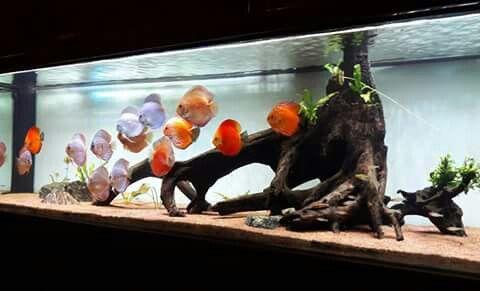
When starting up an aquarium, you may experience a phenomenon known as new tank syndrome. This is the build-up of harmful nutrients and compounds in the aquarium that can kill fish and deter bacterial growth in extreme cases. The reason for the new tank syndrome is that the aquarium hasn’t had time to establish a healthy population of beneficial bacteria.
As mentioned before, beneficial bacteria make the conversion of ammonia to nitrite to nitrate possible. If this cycle isn’t allowed to be fully completed, then bacteria will struggle to detoxify these compounds, making for unsafe water conditions.
However, even if your aquarium is fully cycled, there’s still a chance that it experiences new tank syndrome. This could be due to a weak cycle or overstocking the aquarium too quickly. Both of these circumstances would lead to ammonia entering the aquarium too quickly, overloading the present bacteria populations.
As a result, a mini-cyle is likely to occur where there are abnormal levels of ammonia and nitrite. This can be very dangerous as it can lead to ammonia poisoning and nitrite poisoning.
2. New Livestock Additions

Any time a new fish or invertebrate is introduced into the aquarium, ammonia levels will rise. Depending on the stability of the system, this increase in ammonia shouldn’t be seen in tests as beneficial bacteria will quickly adapt to the new influx.
The problem happens when beginner hobbyists are eager to stock their new fish tank to the brim as soon as the nitrogen cycle is completed.
New livestock additions should be spaced out over the course of weeks or months to give beneficial bacteria populations enough time to adapt to the increased ammonia levels. Adding too much at once is a sure way to cause a mini-cycle, greatly increasing the chances of losing all of your new livestock!
3. Dead Organic Matter
Things die in the aquarium all the time: fish, snails, crabs, and aquarium plants. It’s bound to happen, but it might take some time to notice or you might not be able to reach what’s left before it starts to decompose.
As decaying organic matter starts to decompose, ammonia is created. While most fish tanks are able to handle these small amounts of ammonia entering the system, it’s always recommended to remove what you can to prevent an ammonia spike from happening.
However, sometimes you just don’t notice that one of your fish or invertebrates is missing and the breakdown process has already started. Or, the carcass may be so far in the back of the fish tank that you just can’t reach it no matter how hard you try.
Leaving the dead matter in the fish tank will raise ammonia levels, though not terribly if the system is stable. This is also why a cleanup crew, like saltwater hermit crabs or shrimp, are especially helpful to take care of dead fish and invertebrates before they start to decompose.
4. Overfeeding
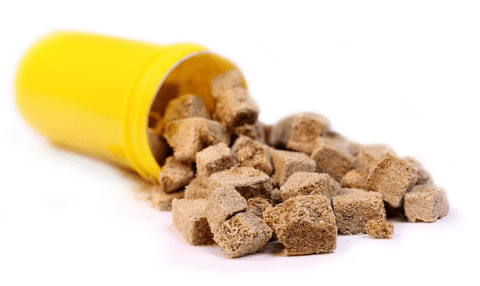
Overfeeding is one of the most common reasons for an ammonia spike in a new fish tank. Fish do not need as much food as we think they do and they often end up overfed.
Fish food is naturally high in unwanted organics, like phosphate, which can quickly cause algae in the aquarium. However, as uneaten fish food is left to rot at the bottom of the tank, it will also start to release ammonia just like other decaying organic matter. Not to mention that overfeeding will result in much more fish waste entering the water as well, also increasing ammonia levels.
In general, fish should only be fed as much as they can eat in a couple of minutes. All uneaten fish food should be removed after.
5. Overstocking
New livestock additions can overwhelm a biological filter; by the biological filter, we mean the beneficial bacteria that live in the filtration system and other surface areas of the fish tank that make the nitrogen cycle possible. This is why overstocking a tank can be so dangerous.
Beneficial bacteria can only handle a certain amount of ammonia and nitrite. If levels exceed this rate, then both ammonia and nitrite levels will accumulate. This can easily become the situation if too many fish are put into the aquarium.
This is also the reason why goldfish need such a large aquarium. These fish are incredibly messy; they are messy eaters and leave a lot of uneaten food, which then results in a lot of fish waste. Because of this, a large filtration system is needed to allow for the most surface area for beneficial bacteria to grow.
6 Ways To Lower It In Aquariums
High ammonia levels in the fish tank should be considered an emergency. The longer your fish and invertebrates are exposed to ammonia, the better the chances of them dying. You need to act fast without making too many changes at once.
Of course, the best way to remove ammonia from the aquarium is by preventing it in the first place.
- Make sure your fish tank is completely cycled. Test water parameters frequently and only add fish when there are no signs of ammonia or nitrite.
- Add fish slowly. Do not overload the system and allow beneficial bacteria populations to grow over time as more and more fish are added.
- Do not overstock. Understand the ratio of ammonia being produced to aquarium water volume. Beneficial bacteria can only concert so much ammonia at one given time.
- Do not overfeed. Though we love to give our fish and invertebrates the best life possible, too much fish waste and uneaten food can lead to a deadly ammonia spike. Remove excess food.
- Perform regular fish tank maintenance.
Otherwise, there are ways to remove ammonia from the fish tank through water changes, increased biological filtration, bacteria supplements, and chemical media.
1. Water Changes
The best way to quickly get rid of ammonia from a fish tank is by doing a succession of water changes over the course of a few days. Though this won’t solve the underlying problem causing ammonia to be high, water changes will help keep ammonia levels lower and safer for fish.
If you find ammonia in your fish tank, don’t panic. Instead, set up a plan over the next few days to do water changes. You don’t want to change out all the water at once as this can create instability in the fish tank and changing parameters that stress out your fish even more.
Instead, start with a 50% water change. If using tap water, make sure that there is no ammonia in the water as this will only increase the ammonia level. For extra precaution, use a water conditioner that detoxifies ammonia and other harmful compounds, like SeaChem Prime.
Seachem prime is a easy to use and affordable choice when it comes to remove chlorine and chloramines from your tap water. Highly recommended!
Continue to do 25-50% water changes over the next few days until the ammonia level reaches 0 ppm. At that point, you will need to identify the cause of the ammonia spike, be it a mini-cyle, a dead fish, or too much uneaten food, and treat accordingly.
2. Increased Biological Filtration
If it isn’t an emergency, then the best way to remove ammonia from a fish tank naturally is to allow beneficial bacteria to do their thing. This is known as biological filtration, which can be increased by increasing the surface area in the aquarium; this is different from chemical or mechanical filtration.
Specific biological filtration media has also been created to facilitate bacterial growth and lower ammonia levels. This works by creating porous media, similar to live rock, that creates more surface area.
The majority of beneficial bacteria live in the filtration systems of our fish tanks. However, they also live in the nooks and crannies of live rock and other aquarium decorations.
Some of these products include:
- SeaChem Matrix. This product grows aerobic and anaerobic bacteria to control ammonia, nitrite, and nitrate levels. One liter provides >~700 m2 surface area and can be used in freshwater and saltwater setups.
- Biohome Ultimate. Meant for saltwater and freshwater hang on the back, canister, and sump filtration systems, Biohome Ultimate media influences both aerobic and anaerobic bacteria growth with added trace elements, like iron and manganese.
- MarinePure. MarinePure is meant specifically for direct use in saltwater fish tanks to reduce ammonia, nitrite, and nitrate levels. It can be used under the substrate or in areas of high flow, including the filtration system.
Editor's Choice!
This is the best media you can buy for your aquarium. It does it all - removes ammonia, nitrite, and nitrates
Biological filtration media is a great and minimally invasive addition for buffering surface area in a hang on the back, canister, or sump filtration system. Still, this media will take some time to populate by bacteria and will not immediately lower ammonia levels.
3. Add Beneficial Rock (AKA Live or Dry Rock)
Porous rock is a great way to add biological capacity to your aquarium. I’ll cover both the saltwater and freshwater side below.
Adding Live/Dry Rock To The Saltwater Aquarium
Live rock is the foundation for any saltwater fish tank setup. Not only does it provide food and shelter for fish and invertebrates, but it houses a plethora of bacterial life that is essential for facilitating the nitrogen cycle.
One way to jumpstart a nitrogen cycle in a saltwater fish tank is to add live rock. There are two reasons for this.
One, live rock will already have beneficial bacteria present on it when added to your tank. This means that you’ll start with a population that can seed the rest of the fish tank. The other reason is that there is bound to be some die-off when transferring the live rock between fish tanks. This die-off will contribute to ammonia levels, starting and supporting a nitrogen cycle.
But how does live rock help with lowering ammonia levels?
In the same way, adding live rock to an established aquarium can introduce more beneficial bacteria that will start to process ammonia and nitrite. There may still be some die-off, but the already established bacteria should be able to handle the sudden influx; if concerned about die-off, quarantine the rocks in a separate system with the same parameters.
As a result, the beneficial bacteria population is immediately expanded, increasing conversion rates and lowering ammonia levels.
Live rock can be expensive though, and there’s always the possibility of unintentionally adding hitchhikers at the same time. Luckily, dry rock is widely available and very easy to add to the saltwater fish tank. For quality dry rock, check out Real Reef Rock. Be careful of going 100% dry rock as this can result in an outbreak of dinos in your tank.
This is the best aquacultured rock you can find in stores and online
The idea behind adding dry rock instead of live rock is to increase surface area. Though this dry rock won’t come with established bacteria, it gives more space for the already-existing bacteria to populate. This will take more time to lower ammonia levels than would live rock but can be a great way to increase biological filtration on a budget.
Adding Porous Dry Rock To The Freshwater Aquarium
In the same way, dry rock, like lava rock, can be added to the freshwater fish tank to get rid of ammonia. However, it’s not common to see live lava rock for sale at your freshwater aquarium store; for this, you may need to reach out to fellow hobbyists or a specialty fish store.
Budget Option
Great choice for budgets. Won't alter your chemistry and provides housing for beneficial bacteria
There is some discussion about the efficacy of lava rock being good for lowering ammonia levels in the aquarium. It’s a porous rock, but some hobbyists have seen little to no effect and worry about what the rock might be made from. Lava rock can also be sharp, which can easily injure fish and invertebrates.
Adding live or dry lava rock will either help seed a fish tank with more beneficial bacteria or provide more space for bacteria to grow, ultimately lowering ammonia levels. How effective and safe this rock is to use is up for question, though.
If you want a completely safe and effective way for controlling ammonia levels in your freshwater fish tank, then a more effective method is to add live plants.
Freshwater Aquaraium Plants

Live aquarium plants are biological filters in themselves. Plants use many nutrients and compounds in their physiological processes, including harmful ammonia and nitrite. They will also help take up some nitrate, which can reduce the need for frequent water changes.
Freshwater aquarium plants require macronutrients: nitrogen, phosphorus, and potassium. Nitrogen may be taken up in the form of ammonium, ammonia, nitrite, or nitrate. Because of this, as well as for the exchange of aesthetic and fish tank oxygenation, many hobbyists use plants to improve water quality and to lower the ammonia level.
So much so that more experienced hobbyists even use freshwater aquatic plants to undergo a fish-safe nitrogen cycle, called a ghost cycle. A ghost cycle is when the fish tank undergoes the nitrogen cycle with little to no observation of changing parameters. This can make ammonia not show up on an ammonia test kit even if it is present in the aquarium.
A ghost cycle can be pretty difficult to accomplish; there is a constant balance between adding more ammonia to sustain the plants while understanding how many plants are needed to reduce ammonia levels.
4. Upgrading Your Filtration System
Whether you’re changing from one fish tank to another or switching from a hang on the back filter to a full sump system, upgrading your filtration system can help your tank handle ammonia levels. Remember, the increased surface area will allow more space for bacteria, thus increasing ammonia to nitrite to nitrate conversion.
Not only does a larger filtration system give more space for bacteria, but it also allows for additional equipment that can further help balance water quality. More refined equipment, such as refugiums and protein skimmers, may be added to help uptake nutrients. Extra space can also be used for more biological filtration to increase surface area even more. For freshwater tanks, you can look into a high quality canister filter.
When upgrading a fish tank, be sure to hang on to any filtration media used, especially biological filtration. Like live rock, aquarium filter media holds a plethora of bacteria that can be used to almost immediately cycle a new aquarium. There is still a chance that a mini-cycle occurs, but with slow stocking and water quality monitoring, it is rare to see high ammonia levels, if at all.
5. Bacteria Supplements
Bacteria supplements are very useful for hobbyists struggling with water parameters or that need to quickly cycle an aquarium. While they’re great at what they do, they should not be mistaken for the answer in a bottle to all your tropical fish tank’s problems.
Bacteria supplements are one way of introducing the necessary bacteria into the aquarium to convert ammonia to nitrate. They have been used to facilitate the nitrogen cycle in new tanks and can help stabilize systems with too much ammonia; bacteria supplements should never be seen as an ammonia remover.
Though bacteria supplements might seem like the answer to your problem, they don’t treat the underlying cause of a high ammonia level. This is why experienced hobbyists strongly recommend beginners go through the full stages of the aquarium cycle to understand how ammonia moves through the aquarium.
If struggling with elevated ammonia levels, some recommended bacteria supplements are:
- FritzZyme TurboStart. This freshwater bacteria supplement is designed to immediately reduce ammonia and nitrite levels to prevent fish death. It can be used to jumpstart an aquarium cycle or to save a fish tank suffering an ammonia spike. As the bacteria in this supplement are living, their shelf life is limited to four months.
- Instant Ocean Bio-Spira. A saltwater bacteria supplement, Bio-Spira contains nitrococcus, nitrosomonas, nitrosospira, and nitrospira bacteria to reduce ammonia and nitrite levels. Bio-Spira is shelf-stable but should be used almost immediately.
Fritz Turbo Start is known in the industry as the fastest acting nitrifying bacteria you can purchase. This 700 version is specialized for freshwater tank and has my highest recommendation
6. Chemical Media
Lastly, chemical media may be used to help reduce ammonia levels in saltwater or freshwater aquarium. However, this should be the last option for beginner hobbyists as, again, chemical media will not solve the reason for the high ammonia level.
Chemical media can be a simple and inexpensive method for quickly removing ammonia from a fish tank though in case of an emergency. Simply place the media in an area of high water flow and replace it as directed.
Here are some of the best chemical media products available to quickly reduce ammonia levels:
- Zeolite. Zeolite, specifically from Marineland, removes ammonia as well as other toxins in the aquarium water, including chloramine. It is best used in freshwater aquariums and will last about a month.
- SeaChem Purigen. Purigen polishes water of ammonia, nitrite, and nitrate for the freshwater and saltwater fish tank. It changes color when depleted, but can easily be recharged.
- Fluval Ammonia Remover. This product specifically targets and reduces ammonia through natural ion exchange. Fluval Ammonia Remover is designed to work best in freshwater aquariums.
Best Value
Seachem is the most effective and quickest way to remove nitrates out of your aquarium
Final Thoughts
Unfortunately, many beginner hobbyists experience an ammonia spike in their aquariums due to impatience and poor understanding of the nitrogen cycle. The growth of beneficial bacteria and conversion of ammonia to nitrite to nitrate can take a long time and we get the hurry!
However, it’s better to end up with a stinky, empty fish tank than to come home to a bunch of dead fish. Allow your aquarium to fully cycle but know how to lower your ammonia level in case of an emergency.
- About the Author
- Latest Posts
I’m thrilled that you found Aquarium Store Depot! Here you’ll find information on fish, aquariums, and all things aquatics related. I’m a hobbyist (being doing this since I was 11) and here to help other hobbyists thrive with their aquariums! I adhere to a high quality Editorial Process and Review products with real life field usage and practical analysis.


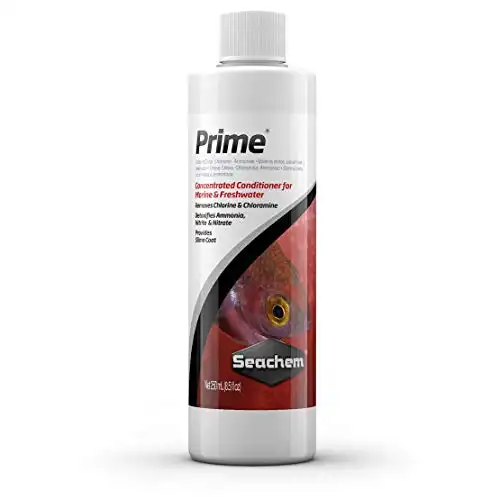
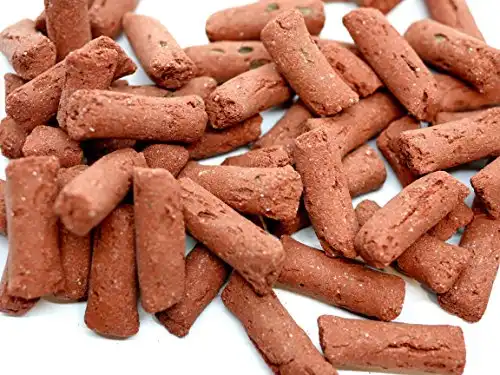


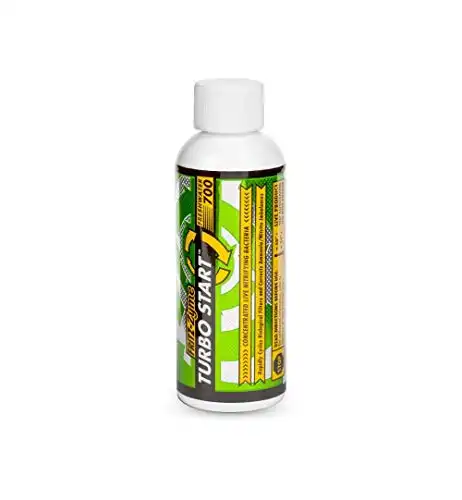
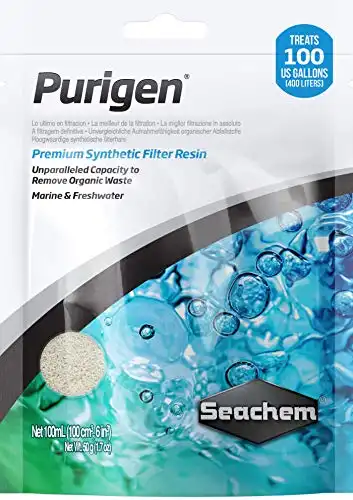




There is a typo in this report
I am assuming you meant to say “Saltwater” and not Salrwater
“3. Add Beneficial Rock (AKA Live or Dry Rock)
Porous rock is a great way to add biological capacity to your aquarium. I’ll cover both the salrwater and freshwater side below.”
Thank you. The typo has been corrected. It is saltwater.